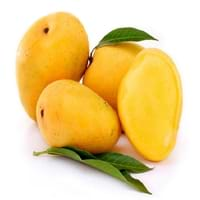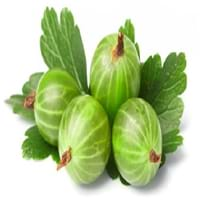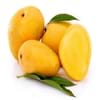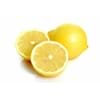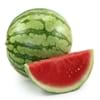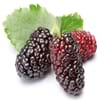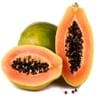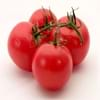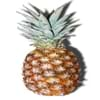Health Benefits
Cancer prevention, Cures fatigue, Heart care, Prevents strokes
Arthritis prevention, Cancer prevention, Liver health, Scurvy treatment, Ulcer prevention
General Benefits
Anti oxidant properties, Boosts immune system, Controls blood pressure, Digestive aid, Improves eye vision, Maintains healthy cholesterol level
Boosts immune system, Digestive aid, Eye care, Fights against infections, Improves blood circulation, Maintains healthy cholesterol level, Sore throat treatment, Treatment of common cold
Skin Benefits
Anti-aging benefits, Brightens and lightens complexion, Skin cleansing, Skin rejuvenation, Treatment of acne, Treatment of blackheads, Treatment of dark spots
Anti-aging benefits, Brightens and lightens complexion, Reduces wrinkles, Treatment of acne
Hair Benefits
Good conditioner, Prevents hair loss, Treatment of dandruff
Prevents hair loss, Promotes longer and healthier hair, Treatment of dandruff
Allergy Symptoms
Abdominal pains, Breathing difficulty, Diarrhea, Runny nose, Sneezing, Swelling of mouth, tongue or lips, Watery eyes
Constipation, Diarrhea, Drop in blood pressure, Eczema, Facial swelling, Hives, Hoarseness, Itching, Itchy eyes, Nausea, Red rash, Redness of eyes, Runny nose, Sore eyes, Swelling of mouth, tongue or lips, Tingling sensation in mouth, Vomiting
Side Effects
Increase in blood sugar level, Diarrhoea, Weight gain
Gastric irritation
Best Time to Eat
Don't consume at night and before bed, Eat the fresh ones, avoid mixing with any other foods, don't eat after meal., Morning time (before lunch)
Best if taken as a breakfast (or empty stomach), As a snack in the late afternoon, Don't consume at night and before bed, Morning time (before lunch)
Vitamin B5 (Pantothenic Acid)
Vitamin C (Ascorbic Acid)
Vitamin K (Phyllochinone)
Not Available
Lutein+Zeaxanthin
Not Available
Phytosterol
Not Available
Calories in Fresh Fruit with Peel
Not Available
Calories in Fresh Fruit without Peel
Not Available
Calories in Frozen Form
Not Available
Calories in Dried Form
Not Available
Type
Tree fruit
Berry, Tree fruit
Season
Spring, Summer
Summer
Varieties
Alphonso, Valencia Pride, Badami, Chaunsa, Nam Dok Mai, Glenn, Sindhri, Madame Francique, Kesar and Keitt
Whinham's Industry, Green Hansa, Clark, Chataqua, Invicta, Keepsake, Lepaa Red, May Duke and Whitesmith
Color
Orange, Red, Yellow
Green, Purple, Red, Yellow
Inside Color
Yellow
Yellowish Green
Origin
Southern Asia
Africa, Europe, South-West Asia
Soil Type
Clay, Loam, Sand
Loamy, Well-drained
Climatic Conditions
Humid, Warm to hot climate
Dry, Warm
Facts about
- A mango tree can bear fruits even after the age of 300 years.
- Height of a mango tree can be as high as 100 feet.
- In India, mango is known as a symbol of love. Also, a mango basket is considered as the sign of friendship.
- Traditionally, kids were told that babies were found under gooseberry bushes.
- They are also called 'fayberries' due to an ancient belief that fairies hid in gooseberry bushes to avoid danger.
Top Producer
India
Germany
Other Countries
Bangladesh, Brazil, China, Indonesia, Mexico, Nigeria, Pakistan, Philippines, Thailand
Austria, Czech Republic, Denmark, Hungary, Lithuania, Poland, Russia, Ukraine, United Kingdom
Top Importer
United States of America
Not Available
Top Exporter
Mexico
Not Available
Botanical Name
Mangifera Indica
Ribes uva-crispa
Synonym
Not Available
Ribes grossularia
Subkingdom
Tracheobionta
Tracheobionta
Division
Magnoliophyta
Magnoliophyta
Class
Magnoliopsida
Magnoliopsida
Subclass
Rosidae
Dillenhidae
Order
Sapindales
Saxifragales
Family
Anacardiaceae
Grossulariaceae
Species
M. indica
R. uva-crispa
Generic Group
Cashew
Saxifrage
Difference Between Mango and Gooseberry
We might think that Mango and Gooseberry are similar with respect to nutritional value and health benefits. But the nutrient content of both fruits is different. Mango and Gooseberry Facts such as their taste, shape, color, and size are also distinct. The difference between Mango and Gooseberry is explained here.
The amount of calories in 100 gm of fresh Mango and Gooseberry with peel is Not Available and 44.00 kcal and the amount of calories without peel is 60.00 kcal and Not Available respectively. Thus, Mango and Gooseberry belong to and category.These fruits might or might not differ with respect to their scientific classification. The order of Mango and Gooseberry is Sapindales and Saxifragales respectively. Mango belongs to Anacardiaceae family and Gooseberry belongs to Grossulariaceae family. Mango belongs to Mangifera genus of M. indica species and Gooseberry belongs to Ribes genus of R. uva-crispa species. Beings plants, both fruits belong to Plantae Kingdom.
